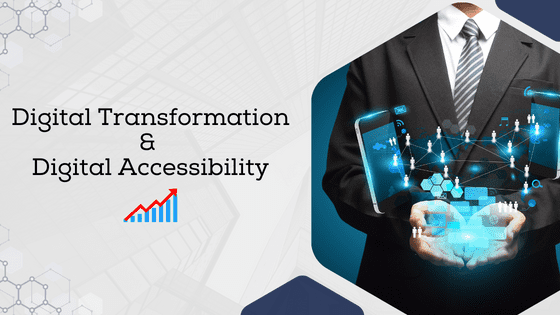The term digital transformation is thrown around a lot these days. But what does it really mean?
Digital transformation is the process of embracing new technologies to create better customer experiences. It’s also about adopting new ways of working and new ways of thinking that enable organizations to stay ahead of their competition.
Digital transformation is a hot topic in the business world today. As technology evolves, organizations must adapt to stay competitive. Here are three digital transformation trends that are gaining popularity:
Change management
Businesses are changing rapidly with the use of digital technology. Change management trends are on the rise in the workplace. Implementing digital transformation can be a challenge for any organization. It is important for managers to be able to manage change and lead their teams through it. Digital adoption platforms are being used to facilitate and support change in many different ways.
Growing cloud migration
Another top digital transformation trend is the growing migration to the cloud. As businesses strive to become more agile and efficient, many are turning to cloud-based solutions to help them meet their goals.
Use of advanced technology
Finally, the use of advanced technology is also a top digital transformation trend. As businesses strive to stay ahead of the competition, they are turning to cutting-edge tech like artificial intelligence and machine learning to help them gain a competitive edge.
Some companies have successfully transformed themselves from traditional businesses into digital businesses by using new technologies to reduce costs, increase customer engagement, and improve performance. Digital transformation has made it easier for people to access information and services.
But how accessible is this digital world for everyone?
BarrierBreak is an internationally recognized and trusted accessibility vendor providing cost-effective accessibility consulting and digital accessibility services.
The changing landscape of digital accessibility
Digital accessibility is an important topic that has been gaining momentum in the past few years. It is the responsibility of companies to make sure that their products are accessible to people with disabilities. As the world becomes increasingly connected and more people gain access to the internet, accessibility is becoming a priority for many organizations.
There are a number of factors that are changing the landscape of digital accessibility.
- An important factor that is changing the landscape of digital accessibility is the availability of advanced technologies to help people with disabilities assert their rights. In the past, many people with disabilities were unaware that they had any legal rights to access digital content and services. However, as the internet has become increasingly essential to daily life, people with disabilities have begun to demand greater access to online content and services.
- Since the past 2-3 years, we have seen an increase in digital accessibility lawsuits. This trend is expected to continue in 2023 and beyond, as plaintiffs become more aware of their rights and the technology to help them assert those rights becomes more widely available. This increased awareness of digital accessibility rights has been fueled by a number of high-profile lawsuits against well-known companies, such as Netflix, Uber, and Sephora etc.
What to expect in 2023?
Mobile Accessibility
As per Statista, the number of smartphone subscriptions worldwide today surpasses six billion and is forecast to further grow by several hundred million in the next few years. As the use of mobile devices continues to grow, it is important for businesses to consider how to maintain ADA compatibility across all mobile platforms.
In recent years, the Department of Justice has focused on ensuring that mobile applications are also accessible to people with disabilities. In 2017, the DOJ issued guidance on how to make mobile applications accessible and compliant with the ADA. The guidance includes best practices for designing and developing accessible mobile apps, as well as tips for testing and deploying accessible mobile apps.
Artificial Intelligence & Machine Learning
Artificial Intelligence (AI) and Machine Learning (ML) are two of the hottest topics in the tech world right now. And it’s no surprise why – these cutting-edge technologies have the potential to revolutionize the way we live and work. From self-driving cars to automated customer service, AI and ML are already starting to change the world as we know it.
There is a growing body of evidence that suggests that artificial intelligence (AI) and machine learning (ML) can be used to increase accessibility for people with disabilities. While AI and ML still have some limitations when it comes to accessibility, the potential is there to make a real difference in the lives of people with disabilities. As these technologies continue to develop, we can only hope that they will be used to make the world a more accessible place for everyone.
Stricter Accessibility Laws
Digital accessibility laws are an important part of making the digital world a more inclusive place for everyone. These laws help to ensure that everyone has equal access to digital content and devices, and that they can use them without barriers.
As the world becomes increasingly digital, the future will focus on the importance of accessibility laws to keep up with technology.
Conclusion
Digital technology is advancing at an unprecedented rate and it’s changing the way we interact with the world. It’s also changing the way people with disabilities interact with the world. With digital accessibility, everyone can enjoy all of the benefits of digital technology.
The recent trends in digital technology have been focused on making more things accessible to more people. Through better design and inclusive interfaces, everyone can experience the convenience and joy of using a computer or mobile device.
To know more about our digital accessibility solutions and how we can help you in creating an accessibility roadmap, feel free to contact our digital accessibility experts.
